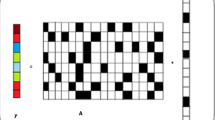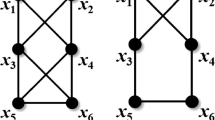Abstract
Routing protocols in wireless mesh networks considering its special topology has been an open field for years. Routing methods which are used now could be classified to two groups. Some methods based on common wireless routing protocols with some changes in metrics and other methods based on opportunistic routing methods. In this paper we use the compressed sensing idea to suggest a new topology update protocol for backbone nodes in WMNs. Stable nodes with low probability of failure beside its capability of processing could support a compressed sensing problem for detection of failed links in predefined topology. In our proposed routing method, link states of backbone nodes should be randomly sampled. Then this sampled link states would be coded. All backbone nodes of WMN would be advertised about these codes by some a few nodes which broadcast these codes. So we would have a compressed sense of link states in all nodes. Our proposed verification based reconstruction method could be used in nodes to detection of failed links. Simulation results show that about 60% overhead decrease of routing protocol would be reached by this method with up to 95% probability of correct detection of failed links.







Similar content being viewed by others
References
Wang, X., & Akyildiz, I. F. (2005). A survey on wireless mesh networks. IEEE Communications Magazine, 43(9), S23–S30.
Cole, R., Clausen, T., & Herberg, U. (2013). Definition of managed objects for the optimized link state routing protocol version 2. draft-ietf-manet-olsrv2-mib-11.
Belding-Royer, E. M. (2003). Multi-level hierarchies for scalable ad hoc routing. ACM/Kluwer Wireless Networks (WINET), 9(5), 461–478.
Padhye, J., Zill, B., & Draves, R. (2004). Comparisons of routing metrics for static multi-hop wireless networks. In ACM Annual conference of special interest group on data communication (SIGCOMM) (pp. 133–144).
Padhye, J., Zill, B., & Draves, R. (2004). Routing in multi-radio, multi-hop wireless mesh networks. In Annual international conference on mobile computing and networking (MOBICOM) (pp. 114–128).
Frey, H. (2004). Scalable geographic routing algorithms for wireless ad hoc networks. IEEE Network Magazine, 18, 18–22.
Boutaba, R., Iraqi, Y., Ishibashi, B., & Waharte, S. (2006). Routing protocols in wireless mesh networks: Challenges and design considerations. Multimedia Tools and Applications, 29(3), 285–303.
MIT Roofnet. http://www.pdos.lcs.mit.edu/roofnet/, http://www.pdos.lcs.mit.edu/roofnet/.
Meshnetworks. http://www.meshnetworks.com, http://www.meshnetworks.com.
Morris, R., & Biswas, S. (2004). Opportunistic routing in multi-hop wireless networks. Newsletter ACM SIGCOMM Computer Communication Review, 34(1), 69–74.
Cañadas-Hurtado, S., & Triviño-Cabrera, A. (2011). Survey on opportunistic routing in multihop wireless networks. International Journal of Communication Networks and Information Security (IJCNIS), 3(2), 170–177.
Cand’es, E. (2006). Compressive sampling. In Proceedings of the international congress of mathematicians.
Romberg, J., Tao, T., & Cand’es, E. (2006). Robust uncertainty principles: Exact signal reconstruction from highly incomplete frequency information. IEEE Transactions on information theory, 52(2), 489–509.
Cand’es, E., & Romberg, J. (2006). Quantitative robust uncertainty principles and optimally sparse decompositions. Foundations of Computational Mathematics, 6(2), 227–254.
Cand’es, E., & Tao, T. (2006). Near optimal signal recovery from random projections: Universal encoding strategies? IEEE Transactions on Information Theory, 52(12), 5406–5425.
Donoho, D. (2006). Compressed sensing. IEEE Transactions on Information Theory, 52(4), 1289–1306.
Baraniuk, R. G. (2007). Compressive sensing. IEEE Signal Processing Magazine, 24, 118–124.
Jacquet, P., & Clausen, T. (Eds.). (2003). RFC 3626, Optimized link state routing protocol (OLSR).
Author information
Authors and Affiliations
Corresponding author
Rights and permissions
About this article
Cite this article
Kargar, S., Hendessi, F. Topology Update Based on Compressed Sensing in WMNs. Wireless Pers Commun 95, 1359–1371 (2017). https://doi.org/10.1007/s11277-016-3834-3
Published:
Issue Date:
DOI: https://doi.org/10.1007/s11277-016-3834-3




